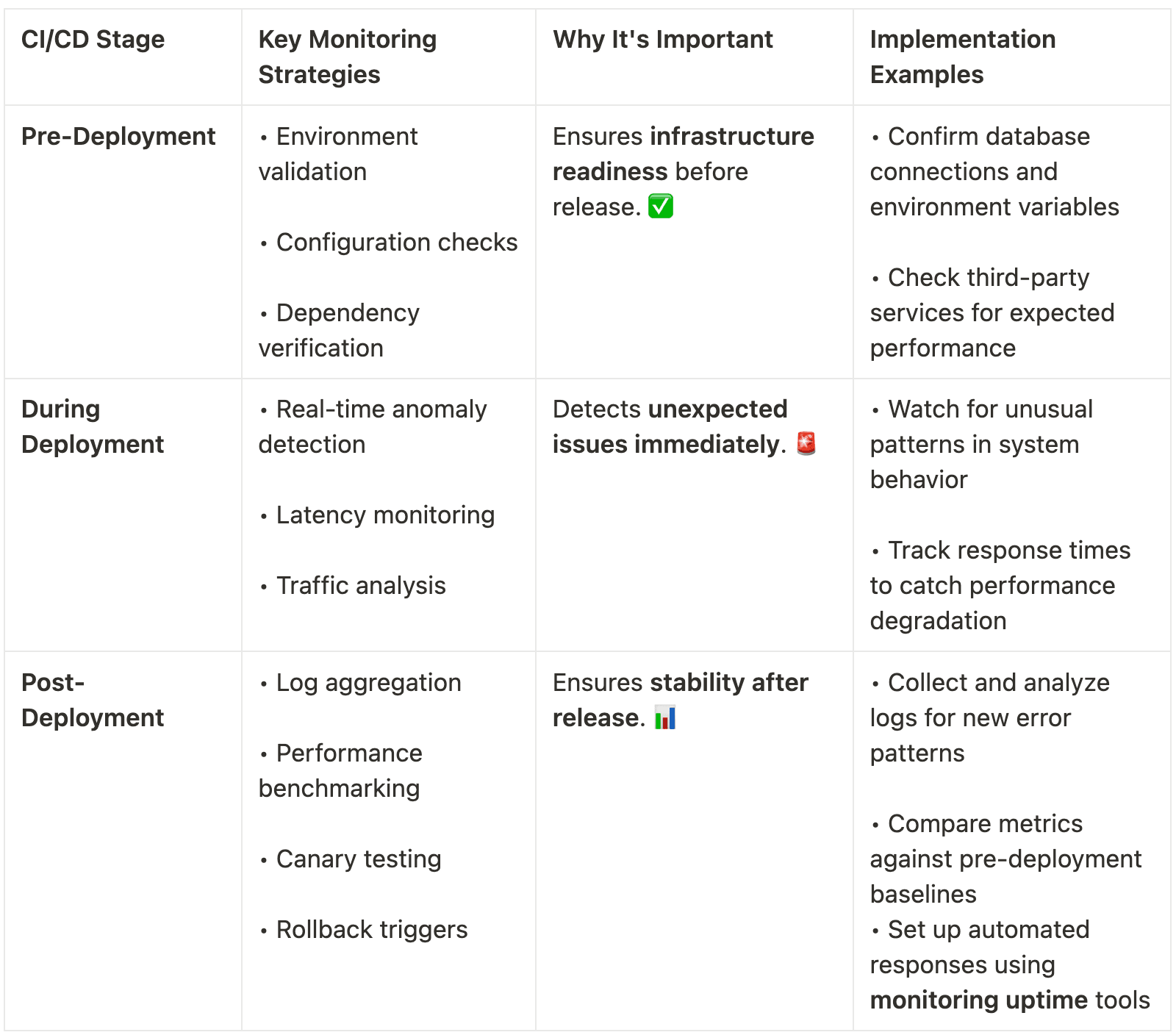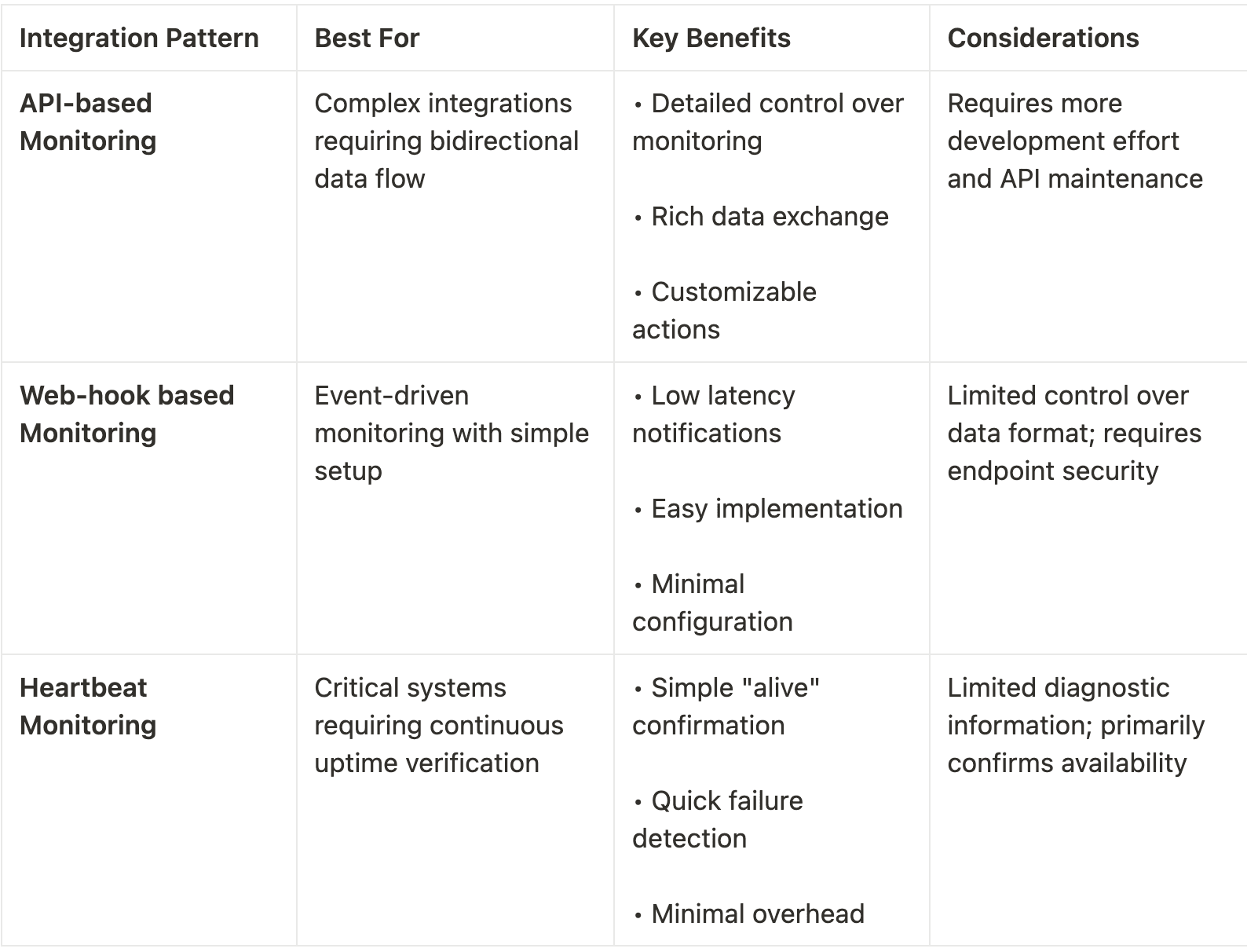Monitoring in CI/CD Pipelines: Essential Strategies for DevOps Teams
As you know, continuous integration and deployment have become standard practice. But as deployment frequency increases, so does the risk of outages and service disruptions.
Modern DevOps teams deploy code changes multiple times a day, with each deployment representing both an opportunity for improvement and a potential risk.
1. Introduction: Why Monitoring is Critical in CI/CD
The Cost of Deployment Failures
When deployments fail without adequate monitoring, the consequences extend far beyond technical issues. Without proper monitoring, these frequent changes can quickly lead to disaster. The real cost isn't just in the failure itself but in the prolonged recovery time when issues go undetected.
Common Challenges in CI/CD Monitoring
Even teams with monitoring solutions in place face significant challenges:
- Visibility gaps between different deployment stages
- Delayed alerting that leaves critical systems vulnerable
- False positives that lead to alert fatigue and ignored warnings
- Difficulty correlating monitoring data with specific deployment changes
Pro tip: Don't wait until after a major incident to improve your monitoring. The best time to enhance your monitoring uptime is during periods of stability, not during a crisis.
2. Key Monitoring Strategies for Each Deployment Stage
Effective CI/CD monitoring isn't a single step—it requires different approaches at each stage of the deployment pipeline. Each phase presents unique risks and requires specific monitoring strategies.

📌 Key Takeaway: Comprehensive monitoring before, during, and after deployment significantly reduces downtime risks and enables faster recovery when issues do occur. Each phase requires different monitoring approaches and tools to effectively protect your systems.
3. Best Practices for CI/CD Monitoring Integration
1. Choosing the Right Integration Patterns
Different monitoring approaches suit different needs in your CI/CD pipeline. Understanding the strengths and limitations of each pattern helps you build a comprehensive monitoring strategy.

For mission-critical systems, consider layering these approaches. For example, use heartbeat monitoring for basic availability checks, webhooks for event-driven alerts, and API integrations for detailed system diagnostics.
2. Setting Up Automated Rollbacks
Key considerations for effective rollback strategies:
- Define clear rollback conditions: Establish specific thresholds for metrics like error rates, latency increases, or availability drops that will trigger automatic rollbacks.
- Implement progressive rollouts: Use techniques like canary deployments or blue-green deployments to limit the initial impact of changes and make rollbacks simpler.
- Leverage feature flags: Decouple deployment from feature activation to allow quick disabling of problematic features without full rollbacks.
Without a properly configured uptime detector, rollbacks might be triggered too late—after users have already experienced significant issues. Configure your uptime website monitoring to detect subtle degradations, not just complete failures.
3. Threshold Configuration & Alert Management
Best practices include:
- Set smart alerting thresholds: Balance sensitivity with practicality. Too sensitive, and you'll drown in false positives; too lenient, and you'll miss critical issues.
- Implement dynamic thresholds: Use historical data to establish baseline performance and adjust thresholds based on typical patterns and variations.
- Create alert hierarchies: Not all alerts are equal. Categorize by severity and impact to ensure critical issues get immediate attention while minor ones are bundled for later review.
- Correlate related alerts: Group alerts by related services or deployment events to provide context and reduce noise.
📌 Key Takeaway: Effective CI/CD monitoring requires thoughtful integration that balances comprehensive coverage with practical implementation. The right combination of integration patterns, automated rollbacks, and intelligent alerting creates a robust safety net for your deployments.
In our next article, we'll explore how to implement monitoring feedback loops, set up real-world CI/CD monitoring with GitHub Actions and Bubobot, and examine future trends in deployment monitoring. Stay tuned for "Implementing CI/CD Monitoring: From Feedback Loops to Future Trends."
Want to learn how Bubobot can help secure your CI/CD pipelines with industry-leading uptime monitoring? Visit Bubobot.com for a free trial with access to all monitoring types including HTTP, server, and specialized service monitoring.